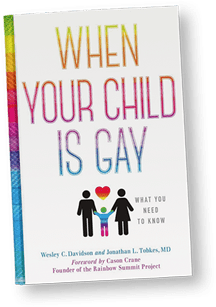Transgender Awareness Week (November 13-19) culminates in Transgender Day of Remembrance on November 20 each year. TDOR was started in 1999 by transgender advocate Gwendolyn Ann Smith in honor of her transgender friend Rita Hester who was killed in 1998.
The purpose of this day is to highlight the losses faced by the transgender community due to anti-transgender bigotry and violence so their existence is not erased. Last year, it is estimated that forty-three transgender or gender non-conforming died due to prejudice. (This figure may be low because their deaths are not always reported and can be misrepresented).
On November 20, in order to keep the memories alive of those who died, it is common to hold vigils at parks, community centers, places of worship and other venues. During the vigil, a list of those that died during the year is read.
Besides vigils and marches, the GSA or Gay Straight Alliance has these suggestions for demonstrating awareness and support of the trans community:
- Discussion forums with local activists, politicians or school officials.
- Teach-ins or speaker bureaus.
- Poetry readings.
- Visual representations of the number of deaths.
- Art/photography displays
- Movie screenings such as “ Boys Don’t Cry.”
- Trans 101 trainings for staff or others.
For a step-by-step guide for organizing a successful Day of Remembrance, here are tips adapted from materials published by Transgender Day of Remembrance, a project of Gender Education and Advocacy:
Before
- Make a plan. Your GSA should plan how you want to approach the project and what you want the day to consist of.
- Create a timeline. After deciding what it is your club would like to do, you should make a timeline so that everyone knows what needs to be done. Be sure to include who is in charge of each item and when it needs to be finished.
- Get more people involved. You should try to get as many people as possible aware of the event and involved in participating. You could do that by sending out e-mail announcements, advertising in the school newspaper, putting up flyers and posters, and of course, by word of mouth.
- Build coalitions. Consider collaborating with other school clubs. There might be a need for education on how violence affects different groups, as well as how anti-transgender violence disproportionately affects low-income youth of color. It is important for people to know how violence based on gender affects all communities.
- Issue a press release. Let the local media know about what you are doing to honor the Transgender Day of Remembrance. Describe the events at your school, history of the event, and use some quotes from GSA members about why you are doing the event. Be sure to include a phone number so a reporter can follow up for interviews.
- Get teachers/administrators/staff involved. Find out if staff are interested in participating.
- Let your principal know. Schedule a meeting with your principal to explain your plans for the Day of Remembrance.
- Be prepared! Have a pre-Transgender Day of Remembrance meeting to discuss positive ways to handle harassment from non-participants. Be prepared to have spokespersons from your group who can speak about the event. This is an emotionally charged subject, and can end up being a very “down” event. Provide remembrance of those we’ve lost, but also provide reassurance and healing for those in attendance.
During
- Announce the event. Post an announcement in the daily bulletin explaining the event and requesting that all staff and students be respectful of the students participating in the project.
- Coordinate volunteers. Ask people to help setup your event. Make sure that you have enough people for setup, monitoring the event, and cleanup.
- Provide resources. Have a resource spot or staffed table where people can find info about your GSA or other LGBTQ groups and resources.
- Organize visual displays. Organize some sort of visible display such as having your participants wear a sticker or T-shirt that commemorates a victim of anti-transgender violence.
- Hold your event. During the event, be sure to: let people know what the purpose of the event is, have speakers discussing transgender issues, read the names of people victimized by anti-transgender violence, describe the meaning of the visual art you have used on campus (e.g. cardboard cutouts, chalkings, etc.), close the event, and thank everyone for coming.
- Create a safe space. Due to the intensity of the event — you should think of creative ways to create a safe space, such as a safe room where people can go if they need to reflect or talk about their feelings.
After
- Continue the education. Host a discussion about how to raise awareness of transgender people every day as opposed to one day out of the year. The Day of Remembrance can be a perfect opportunity to raise people’s awareness of and interest in transgender issues. Some ideas for addressing larger issues within the school or community include:
- Adding “gender identity and gender expression” to the school’s handbook
- Having a Trans 101 training for faculty and staff
- Campaigning for some restrooms be gender neutral and available to people of all genders to use
- Educating your GSA on trans issues and how to be better trans allies
- Evaluate the day. Evaluate the successes of the day and discuss what improvements could be made for next year.
- Plan for next year. Lay groundwork for the next Transgender Day of Remembrance.

When Your Child Is Gay: What You Need To Know
For more detailed advice, see book, co-authored with a mother of a gay son and a psychiatrist, Jonathan L. Tobkes, M.D.